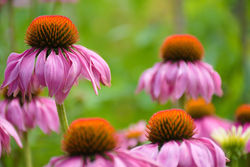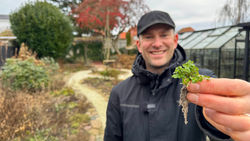How to collect seeds & winter sow Sticky Catchfly (Viscaria vulgaris)
- Lars Wildes
- Jul 4, 2024
- 3 min read
Sticky Catchfly (Viscaria vulgaris), also known as clammy campion, is a beautiful and resilient perennial that brings a splash of color to our garden with its vibrant pink flowers.
Whether you're an experienced gardener or a novice, collecting seeds and winter sowing this plant is a rewarding process... and it's very easy to do.
In the video below, we will walk you through the steps of collecting seeds from Sticky Catchfly and how to winter sow them to ensure a beautiful bloom come spring.
Step 1: Collecting Clammy Campion seeds
The best time to collect seeds from your clammy campion (Sticky Catchfly) plants is in late summer to early fall, once the flowers have faded and the seed pods have dried out. Typically, this is around September to October, depending on your climate.
For us, we collect the seeds in late June to make sure that they don't have time to fall and spread.
Tools You’ll Need
A pair of sharp scissors or pruners
Paper bags or envelopes — We use clean, dry coffee filters to hold our seeds
Labels and a pen
How to collect Clammy Campion seeds
Identify Seed Pods: Locate the dried seed pods on the plant. They are usually brown and brittle at this stage.
Cut the Pods: Use your scissors or pruners to cut the seed pods from the plant. Be gentle to avoid spilling the seeds.
Collect the Seeds: Place the pods in a paper bag, coffee filter, or envelope. Label them with the plant name and the date of collection.
Drying: Allow the pods to dry completely in a cool, dry place for a few days. This helps ensure the seeds are fully mature and dry.
Extract the Seeds: Once dry, gently crush the pods to release the seeds. Separate the seeds from the chaff by blowing gently or using a sieve.
Storage: Store the seeds in a cool, dark place in a labeled envelope until you're ready to sow.
Step 2: Winter sowing Sticky Catchfly seeds
Winter sowing is a method of seed planting that mimics natural processes, allowing seeds to germinate outdoors in early spring. This technique is particularly effective for perennials like Sticky Catchfly.
The video below shows different ways to winter sow AND our favorite way...
Materials Needed
Clear plastic containers with lids (e.g., milk jugs, large yogurt containers)
Potting soil or seed starting mix
A drill or knife (for making drainage holes)
Duct tape
Labels and a pen
Procedure
Prepare the Containers: Clean your plastic containers and cut them almost all the way around the middle, leaving a small hinge. This will allow you to open and close the container easily. Drill or cut drainage holes in the bottom.
Add Soil: Fill the bottom half of the container with about 3-4 inches of potting soil or seed starting mix. Moisten the soil so it's damp but not waterlogged.
Sow the Seeds: Scatter the Sticky Catchfly seeds on the surface of the soil. Gently press them into the soil but do not cover them, as they need light to germinate.
Close the Containers: Close the containers and secure them with duct tape. Label each container with the plant name and date of sowing.
Place Outside: Place the containers outside in a location where they will be exposed to winter weather but are safe from strong winds. The seeds will undergo natural stratification, mimicking the freezing and thawing cycles they would experience in nature.
Monitor: Throughout the winter, check the containers occasionally to ensure they have adequate moisture. In early spring, watch for signs of germination.
With these steps, you can successfully collect seeds and winter sow clammy campion (Sticky Catchfly), ensuring a robust and colorful display in your garden. This simple method not only saves money but also allows you to enjoy the satisfaction of growing plants from seed.






Commentaires